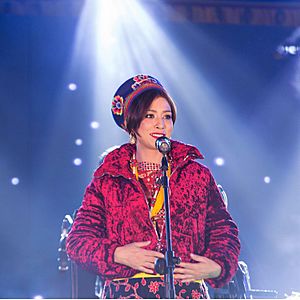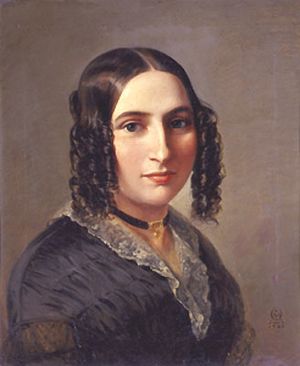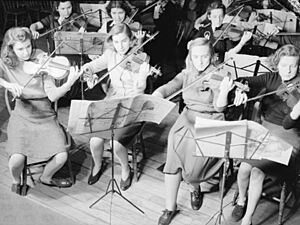Women in music facts for kids
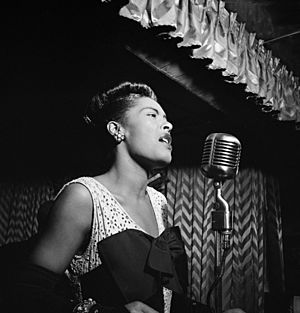
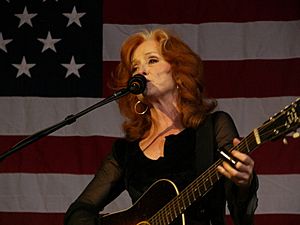
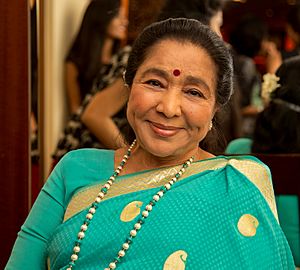
Women in music are involved in many roles, like composing, songwriting, playing instruments, singing, and conducting. They also work as music teachers, critics, and scholars. This topic also covers music styles and events related to women, women's rights, and feminism.
In the 2010s, many women became popular singers in pop and classical music. A lot of women also write songs, often singing their own music. However, there are fewer women working as record producers, rock critics, or playing instruments in rock bands. Famous pop artists like Björk and Lady Gaga have spoken about unfair treatment in the music industry. A study by Dr. Smith showed that women's representation in the music industry has been very low in recent years.
In classical music, many women have composed music from old times until today. But their works are not often played in concerts or included in music history books. For example, the Concise Oxford History of Music mentions only a few women composers, like Clara Schumann.
More women are becoming soloists in classical music, and more are joining orchestras. However, in 2015, a study found that most soloists in major Canadian orchestras were men. In 2012, only 6% of the famous Vienna Philharmonic orchestra members were women. Women are also less common as instrumentalists in rock and heavy metal music, especially in extreme metal. They are also underrepresented as conductors, music critics, producers, and sound engineers.
Even though women were often discouraged from composing in the 1800s, they became very involved in music education. By the late 1800s and early 1900s, women mostly led this field.
According to Jessica Duchen, a music writer, women classical musicians are often judged more on their looks than their talent. She says they feel pressure to look good on stage and in photos. Edwina Wolstencroft, a UK Radio 3 editor, notes that while the music industry welcomes women performers, it's harder for them to get powerful jobs like being an orchestra conductor. This job has been called "one of the last big challenges for women in the music industry". In pop music, many women sing, but very few work behind the scenes as music producers, who manage the recording process. One of the most recorded artists ever is Asha Bhosle, an Indian singer.
Contents
- Songwriters: Crafting Melodies and Lyrics
- Composers: Creating Classical Masterpieces
- Instrumental Performers: Playing the Music
- Singers: The Voice of Music
- Music Scholars and Educators: Teaching and Researching Music
- Conducting: Leading the Orchestra
- Other Musical Professions: Behind the Scenes
- Images for kids
- See also
Songwriters: Crafting Melodies and Lyrics
A songwriter creates the words (lyrics), tunes (melodies), and chord progressions for songs. This is usually for popular music styles like pop, rock, or country music. Sometimes, a songwriter is also called a composer, but that term is more often used for classical music creators.
Early Songwriters: Breaking Barriers
"Only a few women songwriters in America had their music published and heard in the late 1800s and early 1900s." Many people believe that women were not expected to create music, but rather just perform it. In 1880, a critic named George P. Upton even wrote that women "lacked the natural ability to compose good music."
However, women later became very involved in music education. They wrote hymns and children's music. By the mid-1800s, notable women songwriters like Faustina Hasse Hodges and Marion Dix Sullivan appeared. By 1900, many more women wrote songs, but some had to use fake names or initials to hide their gender.
Carrie Jacobs-Bond was a leading woman composer from the late 1800s to the mid-1900s. She was the first woman songwriter to sell a million copies of her music. Other famous early songwriters included Maude Nugent and Charlotte Blake. Charlotte Blake even had her full name hidden at first by her publisher. Caro Roma was another popular composer who used a gender-neutral name. In British music halls in the early 1900s, most songwriters were men, but about 30% of the singers were women.
Jazz Songwriters: A New Rhythm
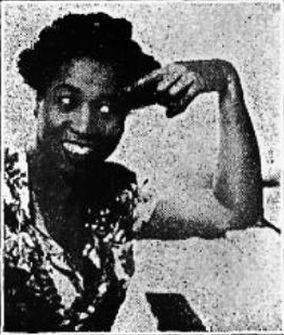
Jazz songwriting was mostly done by men for a long time, but some women made a big impact. In the 1930s, Ann Ronell wrote hit songs like "Willow Weep for Me" and "Who's Afraid of the Big Bad Wolf?". Irene Higginbotham wrote almost 50 songs, with "Good Morning Heartache" being her most famous.
Dorothy Fields wrote lyrics for over 400 songs, some played by Duke Ellington. She won an Oscar for "The Way You Look Tonight" in 1936. Lil Hardin Armstrong played piano in a famous jazz band and wrote "Struttin' with Some Barbecue." Even though Billie Holiday was best known as a singer, she co-wrote songs like "God Bless the Child."
Jazz music helped women gain more freedom in the early 1900s. It opened up more jobs in performing arts, which had been mostly for men. This led to the first jazz Broadway musical, Showboat. Many women in jazz, especially women of color, helped shape the genre into what it is today.
Famous women like Bessie Smith, known as the Empress of the Blues, made history. Dolly Jones was the first woman jazz trumpeter to be recorded. Women like Sweet Emma Barrett and Mary Lou Williams also had a big impact. Even though these women were very talented, they often didn't get as much credit as their male peers.
Ingrid Monson noted that when women started playing piano, they gained more social acceptance in music. Women like Valaida Snow, the "queen of the trumpet," and Nona Gendryx, a jazz vocalist, were also very successful. Many accomplished women in jazz are still not widely known.
Some women jazz musicians became famous during World War II when men were away. But when the men returned, these women faced challenges and criticism from their male band members.
Pop Songwriters: Changing the Tune
In the 1960s pop music scene, songwriting was mostly for men. Women were mainly seen as listeners. Singing was okay for girls, but playing instruments, writing songs, or producing records was not common. Young women were not taught to see themselves as music creators.
Carole King had a very successful songwriting partnership with her husband, Gerry Goffin. They wrote hits like "The Loco-Motion" and "Natural Woman." King was the first woman to win the Gershwin Prize for Popular Song in 2013. Ellie Greenwich and her husband also wrote many famous songs. Laura Nyro wrote "Wedding Bell Blues" and said she wasn't interested in "normal limits" for her songwriting.
New Wave of Female Singer-Songwriters
By the late 1960s, a new group of female singer-songwriters emerged. They wrote more personal songs, like poets such as Anne Sexton. Artists like Joni Mitchell, Lotti Golden, and Laura Nyro were featured in Newsweek for their "voyages of self-discovery" through music.
These women faced challenges, including unfair treatment. Joni Mitchell wanted to be seen as an artist, not just a woman or based on her race. She didn't call herself a feminist but spoke out against discrimination. Women songwriters wanted their talent recognized without being judged by their gender. Grace Slick was also a famous rock and roll figure in the 1960s psychedelic music scene. These women paved the way for future generations of singer-songwriters.
Songwriters in Musical Theatre
In musical theatre, female songwriters are rare. Most shows are written by men. In 2015, for the first time, an all-female writing team, Lisa Kron and Jeanine Tesori, won the Tony Award for Best Original Score for Fun Home. In 2013, Cyndi Lauper was the first female composer to win the Tony for Best Score without a male co-writer.
Other notable female songwriters in musical theatre include Lauren Pritchard and Zoe Sarnak. The gender imbalance still exists today, with very few women composing for wind bands or choirs. However, over fifty women have received international awards for writing full musical scores for Broadway and Off-Broadway shows.
Black Women Songwriters
According to LaShonda Katrice Barnett, who wrote a book about black women songwriters, out of over 380 members in the Songwriters Hall of Fame, only two are black women: Sylvia Moy and Valerie Simpson.
Famous Songwriters
Here are some notable songwriters, many of whom also sing and play instruments, recognized by Rolling Stone:
- Carole King
- Joni Mitchell
- Dolly Parton
- Stevie Nicks
- Madonna
- Chrissie Hynde
- Loretta Lynn
- Lucinda Williams
- Björk
- Taylor Swift
- Patti Smith
Composers: Creating Classical Masterpieces
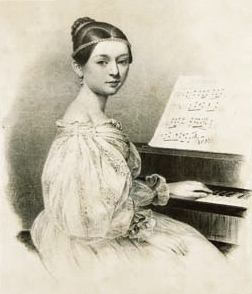
American music expert Marcia Citron asked why music by women is so rarely played in classical concerts. She believes that in the 1800s, women composers often wrote songs for small recitals instead of big symphonies for orchestras. Symphonies were seen as the most important type of music, so women were often not considered major composers.
According to Abbey Philips, "women musicians have had a very difficult time breaking through and getting the credit they deserve." In the Middle Ages, most art music was for religious purposes. Because of beliefs about women's roles, few women composed this type of music, except for people like the nun Hildegard of Bingen. Most music history books mainly talk about male composers. Very few works by women composers are part of the standard classical music repertoire.
Medieval Era Composers
Hildegard of Bingen (1098–1179) was a German nun, composer, writer, and philosopher. One of her works, Ordo Virtutum, is an early example of a religious play with music. She wrote 69 musical pieces, each with its own poem. This is one of the largest collections from medieval composers. Her music is known for its soaring melodies that went beyond traditional Gregorian chant.
Renaissance Era Composers
Maddalena Casulana (1544–1590) was an Italian composer, lutenist, and singer. In 1568, she published her first book of madrigals, which was the first printed music by a woman in Western history. She wrote in the dedication that she wanted to show the world that men were wrong to think only they had "gifts of intellect and artistry." Her music was complex and focused on the words.
Caterina Assandra (1590–1618) was an Italian composer and nun. She was a famous organist and published many works. She studied counterpoint and composed motets and organ pieces. Her music included both traditional and new styles.
Baroque Era Composers
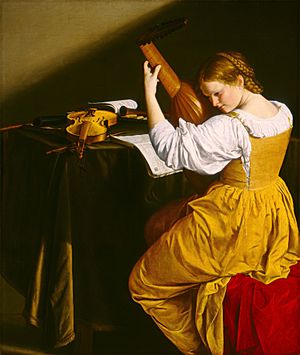
Francesca Caccini (1587–1641) was an Italian composer, singer, lutenist, poet, and music teacher. She was praised by King Henry IV of France as the "best singer in all of France." She worked for the Medici court and became their highest-paid musician. She wrote 16 staged works and was known for her dramatic use of harmony.
Barbara Strozzi (1619–1677) was an Italian Baroque composer and singer. She was very talented at singing and composing from a young age. She was known as "the most prolific composer" of secular vocal music in Venice during her time. Her music was lyrical and focused on the vocal sound.
Élisabeth Jacquet de La Guerre (1665–1729) was a French composer and harpsichordist. She was a child prodigy who performed for King Louis XIV. She became a royal court musician and composed in many different styles, including an opera. She was one of the few well-known female composers of her time.
Classical Era Composers
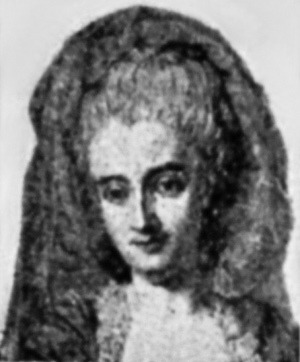
Harriett Abrams (1758–1821) was an English composer and singer. She was known for her performances of George Frideric Handel's music. She composed several popular songs, including "The Orphan's Prayer."
Maria Teresa Agnesi (1720–1795) was an Italian composer, harpsichordist, and singer. She was famous for her compositions. Her career was supported by progressive leaders who believed in women's rights. She composed operas, arias, concertos, and sonatas.
Princess Anna Amalia (1723–1787) was a Prussian composer and music collector. She played the harpsichord, flute, and violin. She composed chamber music like flute sonatas and collected over 600 volumes of works by famous composers like Johann Sebastian Bach.
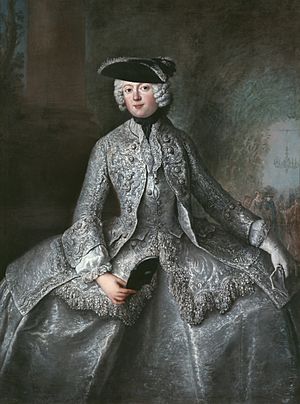
Elisabeth Olin (1740–1828) was a Swedish opera singer and composer. She was a famous vocalist and published her own compositions. She became the first woman to be named Hovsångare (Court Singer) and the first female member of the Royal Swedish Academy of Music.
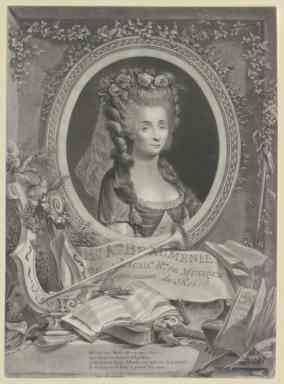
Henriette Adélaïde Villard de Beaumesnil (1748–1813) was a French composer and opera singer. She was the second woman to have her composition performed at the Paris Opéra. Her operas included Anacréon and Tibulle et Délie.
Anna Bon (1739–1767?) was an Italian composer and performer. She studied at a famous music school in Venice. She worked as a 'chamber music virtuosa' for a German court and dedicated her works to royalty. She composed sonatas, divertimenti, and an opera.
Jane Mary Guest (1762–1846) was an English composer and pianist. She was a student of Johann Christian Bach and taught piano to princesses. Her first published sonatas were very popular and sold widely.
Marianne von Martínez (1744–1812) was an Austrian composer, singer, and pianist. She received music lessons from famous composers like Joseph Haydn. She performed for the Empress Maria Theresa and wrote many vocal works, masses, and motets.
Romantic Era Composers
Maria Szymanowska (1789–1831) was a well-known Polish composer and pianist. She wrote in similar styles to Frédéric Chopin. She was connected to many famous people of her time, like Gioachino Rossini and Johann Wolfgang von Goethe.
Fanny Mendelssohn (1805–1847) was one of the most famous women composers of the 1800s. She was very musically talented as a child. However, her father told her that music should only be "an ornament" in her life, not a profession. Her brother, Felix Mendelssohn, also advised her against publishing her music or having a career in it.
Clara Schumann (1819–1896) was a German composer and concert pianist. She had a 61-year career that changed how piano recitals were performed. By age eleven, she was a virtuoso soloist and toured Europe. She was highly praised by famous composers like Frédéric Chopin and Franz Liszt.
Clara Schumann also changed the types of pieces played in concerts. Early in her career, she played showy pieces to highlight her skills. She always included at least one of her own works in her programs. Her compositions include songs, piano pieces, a piano concerto, and a piano trio.
Modern Composers: 20th and 21st Centuries

Katherine Hoover (1937–2018) studied music at the University of Rochester. She started publishing works in 1965. She won awards for her flute pieces, which used special techniques. Her works have been recorded and performed in famous venues like Carnegie Hall.
Joan Tower (born 1938) wrote her piece Black Topaz in 1976. She was the first woman to win the Grawemeyer Award for Music Composition in 1990, which came with a large prize. She has been a professor at Bard College since 1982 and is considered one of the most important women composers of the 20th century.
Ellen Taaffe Zwilich (born 1939) was the first woman to earn a doctorate in composition from Juilliard. In 1983, she became the first woman to win the Pulitzer Prize in music for her Symphony No. 1. Her music is known for its clear design and rich sounds.
Libby Larsen (born 1950) co-founded the Minnesota Composers Forum in 1973. She has composed over 220 works, including pieces for orchestra, opera, and dance. She won a Grammy Award in 1994 and a Lifetime Achievement Award in 2000.
Jennifer Higdon (born 1962) has received many awards, including from the Guggenheim Foundation. Her piece blue cathedral is often performed. In 2010, she won a Grammy Award for her Percussion Concerto and the Pulitzer Prize in Music for her Violin Concerto.
Other notable female composers include:
- Agnes Tyrrell (1846–1883)
- Ethel Smyth (1858–1944)
- Amy Beach (1867–1944)
- Florence Price (1887–1953)
- Nadia Boulanger (1887–1979)
- Lili Boulanger (1893–1918)
- Sofia Gubaidulina (born 1931)
Instrumental Performers: Playing the Music
Popular Music Instrumentalists
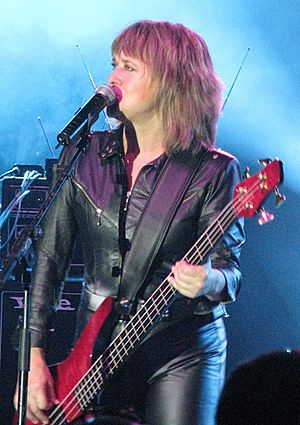
Women are very common as singers in many popular music styles. However, professional women instrumentalists are less common, especially in rock genres like heavy metal. Playing in a band is often seen as a male activity, shaped by existing male friendship groups. Rock music is also often seen as a form of male rebellion.
Some experts say that men sometimes exclude women from bands or from band activities. Women are often seen as passive listeners of pop music, not as serious rock musicians. One reason for fewer mixed-gender bands is that bands are often close-knit groups where same-sex friendships are important. In the 1960s, singing was acceptable for girls, but playing an instrument was not.
Philip Auslander notes that even though many women were in rock by the late 1960s, most only sang. While some women played instruments in American all-female garage rock bands, these bands didn't become widely successful. In heavy metal bands, performers were almost always male until the mid-1980s, with few exceptions like Girlschool. However, in the 2010s, more strong women metal musicians have made their mark.
When Suzi Quatro appeared in 1973, no other famous female musician worked in rock as a singer, instrumentalist, songwriter, and bandleader at the same time. Auslander says she "kicked down the male door in rock and roll" by showing that a female musician could play as well as, or better than, men.
Here are some famous artists known for their instrumental skills:
- Joni Mitchell
- Bonnie Raitt
- Nancy Wilson
- Kaki King
- Orianthi
- Sister Rosetta Tharpe
- Jennifer Batten
- Mary Ford
- Lita Ford
- Joan Jett
- Carole King
- Tal Wilkenfeld
- Shirley Horn
- Eva Cassidy
- Ruth Brown
- Marian Anderson
- Gunhild Carling (plays many instruments)
All-Female Bands and Girl Groups
An all-female band is a music group in popular styles like blues or jazz made up only of women musicians. This is different from a girl group, where the female members are only singers. While all-male bands are common, all-female bands are less so.
A girl group usually has several female singers who sing together in harmony. The term "girl group" also refers specifically to American female pop singing groups popular in the late 1950s and early 1960s. All-female bands are sometimes also called girl groups.
These all-female bands were hard to keep going. Many early groups struggled to find new female musicians when members left. Some even had to let men join to keep the band alive.
From the 1930s to the 1960s
In the Jazz Age and the 1930s, all-female bands like The Blue Belles and The Harlem Playgirls were popular. Ina Ray Hutton led the all-girl band, the Melodears, from 1934 to 1939. A Polish group called Filipinki started in 1959.
All-female rock bands began to appear with rock and roll. Some of the first to sign with a record label were Goldie & the Gingerbreads in 1964 and Fanny in 1969. Other early bands included The Liverbirds and the Ace of Cups.
From the 1970s to the 1980s
In 1971, Fanny became the first all-female band to reach the top 40 on the Hot 100 chart. In 1975, the Canadian sisters Kate and Anna McGarrigle released their first album. The Runaways were an early successful all-female hard rock band, starting in 1976. Members like Joan Jett and Lita Ford later had solo careers.
The 1980s saw all-female bands and female-fronted rock bands finally achieve chart success. Joan Jett's "I Love Rock 'n' Roll" and the Go-Go's "We Got the Beat" showed the music industry that women who played instruments could make money.
In 1989, the famous female band, the Dixie Chicks, started playing music. This trio, with Natalie Maines as lead singer, sold more CDs than all other country music groups combined. They won five Grammys. Another famous band, the WildWood Girls, toured for the USO and played at Dollywood. They released six recordings despite challenges as an all-girl band.
Punk Music and Women's Impact
In the UK, punk music in the late 1970s had a "anyone can do it" attitude. This encouraged women to make big contributions. Unlike rock and heavy metal which were male-dominated, punk's rebellious spirit welcomed women. Chrissie Hynde said that in punk, "discrimination didn't exist."
Music historian Helen Reddington says that the idea of young punk women focusing only on fashion was wrong. Many women punks cared more about the ideas and social messages. Caroline Coon argues that before punk, women in rock were almost invisible. But in punk, she says, you could write its whole history without mentioning any male bands.
However, guitarist Viv Albertine felt that "no one took us seriously." She said, "we got no respect anywhere we went." Punk's anti-establishment stance created a space for women who felt like outsiders in the male-dominated music world. Sonic Youth's Kim Gordon believes women are "natural anarchists" because they always work within a male system.
Heavy Metal and Women's Presence
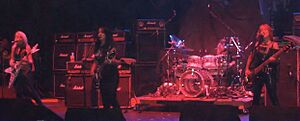
The all-female heavy metal band Girlschool formed in South London in 1978. They became well-known in the early 1980s. One original member, Kathy Valentine, left to join The Go-Go's. Women in heavy metal often face limits because the genre is very male-focused.
Grunge Music and Female Artists
While many think grunge bands of the 1980s and 1990s were mostly male, women were present in bands like L7, Hole (led by Courtney Love), and Babes in Toyland. Grunge was also connected to Riot grrrl, a feminist punk movement. Notable women instrumentalists included bassists D'arcy Wretzky and Melissa Auf der Maur from The Smashing Pumpkins, and drummers Patty Schemel and Lori Barbero.
From the 1990s to the 2000s
In the 1990s, music magazines started taking female musicians more seriously, featuring artists like Bonnie Raitt on their covers. Bands like Hole and L7 became popular. They showed a confident and sometimes "bad" attitude, challenging ideas about how all-female bands should act.
The punk, female-led Riot grrrl genre of the 1990s included bands like Bratmobile and Bikini Kill. Destiny's Child was a famous American female group that started in 1990. They signed with Columbia Records in 1997. Their album The Writing's on the Wall (1999) included hits like "Bills, Bills, Bills." The Spice Girls was a British all-girl pop group formed in 1994. Their single "Wannabe" was number one in 37 countries.
From the 2000s to the 2010s
In the 2000s, all-female and female-fronted bands began using their influence to support feminism and women in music. Bands like The Distillers, led by Brody Dalle, helped the rise of street punk. Haim, a band of three sisters, openly speaks out about the lack of female-fronted bands at music festivals and unfair pay for female artists.
Recently, the lack of women in music has been a big issue. Female musicians are often overlooked compared to male artists. However, many people in the music industry are working to change this.
From 2010 to 2018
From 2010 to 2018, many girl bands became popular. One of the most famous is Little Mix (2011), a British band from The X Factor. They were the first all-female group since the Pussycat Dolls to reach the US top five with their album DNA. They also broke the record held by the Spice Girls for the highest debut US chart position for a British girl group's first release.
Fifth Harmony is an American female group from Miami, also on X Factor in 2012. Their three studio albums reached the top ten of the US Billboard 200. K-pop girl groups like Twice and Blackpink have also become very successful, reaching high spots on the Billboard charts and winning many awards. Chinese idol girl groups like SNH48 and Rocket Girls 101 have also achieved significant success.
Jazz Instrumentalists
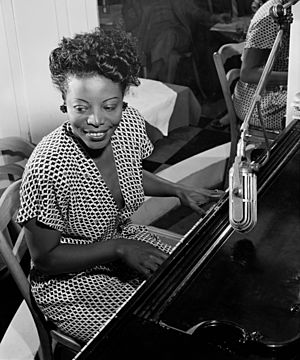
Historically, most well-known women in jazz have been singers, like Ella Fitzgerald and Billie Holiday. Culture Trip notes that women in jazz have often been "limited to the role of singer." However, there are many notable women instrumentalists. Some are also composers and bandleaders:
- Toshiko Akiyoshi (b. 1929): bandleader, pianist, arranger, composer
- Regina Carter: jazz violin
- Melba Liston: trombonist and arranger
- Vi Redd (b. 1928): alto saxophonist
- Melissa Aldana: tenor saxophonist
- Emily Remler: jazz guitar
- Mimi Fox: jazz guitar
- Sweet Emma Barrett
- Terri Lyne Carrington (drums)
- Carla Bley (piano)
- Mary Lou Williams (piano)
- Billie Pierce (piano)
- Jeanette Kimball (piano)
- Lovie Austin (piano and bandleader)
- Joelle Khoury (piano and composer)
- Shirley Horn
- Eva Cassidy
- Ruth Brown
There have also been all-female jazz bands like The International Sweethearts of Rhythm. During World War II, these all-women groups often entertained troops while male musicians served. However, after the war, these groups were often pushed aside when the men returned.
Some of these musicians helped shape jazz and American culture. June Norton, for example, became the first black woman in Washington, D.C., to sing in TV commercials. She won many awards for her singing. Later, she became a counselor, helping young people and female prisoners.
Shirley Horn (1934–2005), a female pianist, composer, and vocalist, also made big contributions to jazz. She recorded over 25 albums. She practiced at the Howard University Junior School of Music. Miles Davis helped her career by insisting she open for him at the Village Vanguard. She received many awards, including a Grammy Award in 1999.
Classical Music Instrumentalists
Classical instrumentalists might play solo concerts, chamber music, or perform in an orchestra. They can perform live or make recordings. Historically, there have been gender roles in classical music instruments.
Women in Orchestras
Historically, orchestras were almost entirely male, except for the harp player, which was seen as a "women's instrument." In 1917, a music newspaper suggested orchestras allow women to play "lighter instruments," but only until World War I ended. In the 1990s, some orchestras started holding "blind" auditions behind a screen to reduce gender bias.
In the past, the Vienna Philharmonic Orchestra claimed that having only men made their orchestra sound better. Some male members even said that men "carry secrets that are involved with music" and that "pregnancy brings problems" for female musicians. The Vienna Philharmonic did not accept women as permanent members until 1997, much later than other major orchestras.
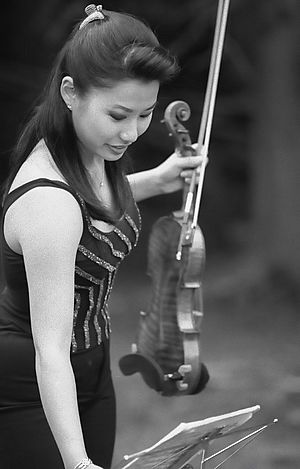
In 1997, facing protests, the orchestra finally agreed to admit a woman, Anna Lelkes, as a harpist. As of 2013, only 6% of the orchestra's members were women. The president of the Vienna Philharmonic said they now use blind auditions to choose "the best we get," hoping for more gender balance over time.
In 2013, an article in Mother Jones noted that many famous orchestras now have many female members. Women even outnumber men in the New York Philharmonic's violin section. However, brass, percussion, and string-bass sections are still mostly male.
Solo Performers
In classical music, soloists can perform alone, like pianists playing solo piano pieces. Or they can be accompanied by a pianist, a small group, or a full orchestra for a concerto. In the 2014–2015 season, most concerto soloists with major Canadian orchestras were male. For example, 84% of soloists with the Orchestre Symphonique de Montreal were men.
An internationally famous soloist is Argentina's Martha Argerich, considered one of the greatest pianists ever recorded.
Singers: The Voice of Music
Popular Music Singers

Pop singers perform vocals for bands and groups, from duos to large jazz bands. They perform live and record in studios. Some singers also appear in music videos to promote their songs. In some pop styles, singers dance during their shows. Famous examples include Madonna, Beyoncé, and Britney Spears. Madonna is a key figure who critics say paved the way for all female artists after her.
Singer-songwriter and producer Björk has said that "women's work and knowledge—inside and outside of the music industry—go unnoticed." She feels that her male co-workers often get credit for the sound of her records. Because she mainly sings on stage, people often assume she doesn't produce or play instruments. In 2015, Lady Gaga spoke about the "difficulties of being a female recording artist." She said it's like a "boys club" that women can't easily join. She felt that others in the industry didn't believe women could have a "musical background" or understand what they were doing.
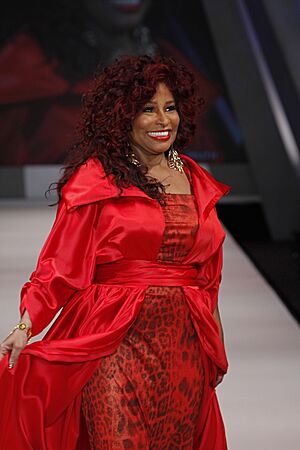
Indie folk singer-songwriter Ani DiFranco said that in the past, even entering a guitar store was an "act of courage" for women because it felt like a "boys' club." Female artists often feel pressure to please men, and female DJs also find it hard to fit into a male-dominated field.
Despite funk's popularity, few people have studied the work of women in funk. Most research has focused on men. Betty Davis is an artist whose name is not widely known as a pioneer in funk and rock. Other notable funk women include Chaka Khan, Labelle, and Brides of Funkenstein.
Here are some of the top-earning female singers in the 2010s. Most of these singers also write songs, and some are music producers:
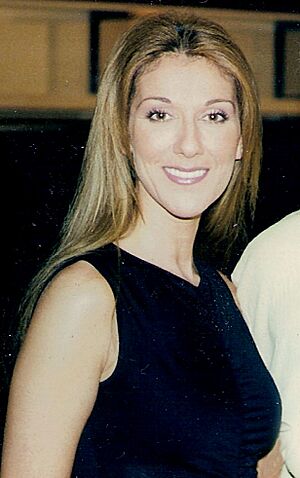
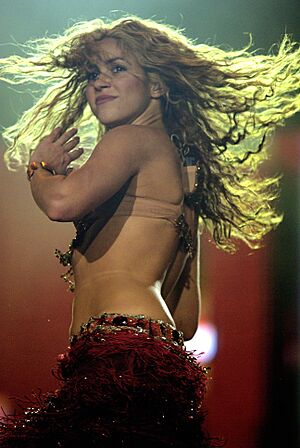
- Adele
- Beyoncé
- Lady Gaga
- Madonna
- Katy Perry
- Rihanna
- Britney Spears
- Taylor Swift
- Ariana Grande
- Celine Dion
- Jennifer Lopez
- Shakira
In East Asian pop music, Japanese idol girl groups have been very successful. AKB48 is the best-selling act in Japan by singles sold. The best-selling album ever in Japan, First Love (1999), is by Hikaru Utada. South Korean idol girl groups like Twice and Blackpink have also been very successful. K-pop has grown popular in the US, but male groups often get more attention. Chinese idol girl groups like SNH48 and Rocket Girls 101 have also achieved great success recently.
Blues Singers: Powerful Voices
Classic female blues was an early form of blues music popular in the 1920s. It mixed traditional folk blues with city theater music. These songs, sung by women, were the first blues music to be recorded. These singers were pioneers in the record industry and helped make the 12-bar blues popular across the US.
Ma Rainey (1886–1939), known as the "Mother of the Blues," was one of the first to perform blues on stage around 1902. Mamie Smith recorded "Crazy Blues" in 1920, selling over 75,000 copies. She became known as "America's First Lady of the Blues." Other early blues singers included Lucille Hegamin and Bessie Smith.
Bessie Smith was the most popular classic blues singer. She started recording in 1923 and became the highest-paid black artist of the 1920s, recording over 160 songs. These early blues women influenced later singers like Mahalia Jackson. Their contributions included more improvisation, unique phrasing, and vocal expressions like shouts and wails. These changes influenced jazz, Broadway musicals, gospel, and eventually rock and roll.
Country Music Singers
Unfair treatment and gender bias often happen in country music. Recently, a style called "Bro-Country" has emerged, with lyrics that focus on women's looks and treat them as objects. Some popular "Bro-Country" artists include Luke Bryan and Blake Shelton. This has made gender bias more noticeable in country music, moving backward compared to pop or rap.
Dr. Eric Rasmussen argues that country music in the 2010s shows more unfair treatment against women than in the 1990s. This includes talking more about women's appearance, showing them in revealing clothes, comparing them to objects, and using slang terms for them. "Bro-Country" might be influenced by older Southern cultural ideas that included unfair treatment.
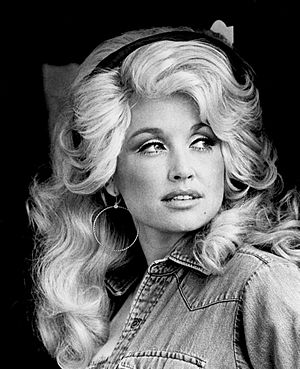
Women in country music continue to face these issues. Kacey Musgraves, a recording artist, said that if a record label can't make your song popular, they often blame it on your personality or the fact that you're female. Women like Kacey Musgraves often face criticism from male competitors, no matter what they do.
Despite the popularity of male country artists and the unfair treatment, many female artists have achieved great success. Dolly Parton, a country singer for over 55 years, has had a very successful career. She has released over 45 musical albums, appeared in films, and created a theme park called Dollywood.
Carrie Underwood, the famous American Idol winner, also made a lasting impact. Her album Cry Pretty was her fourth to reach number one on the Billboard 200 list. This made her the first woman singer to have four country albums reach number one on the all-genre Billboard 200.
Miranda Lambert, a women's rights activist and animal lover, is another woman with a strong career. Her songs "Over You" and "Heart Like Mine" topped the Billboard charts in 2010 and 2011. As a solo female artist, she writes honest songs to help other women feel less alone in tough times. She uses her fame to work with charities like the Humane Society.
Jazz Singers: Iconic Voices
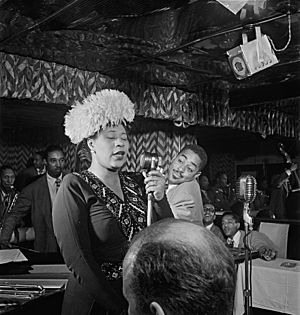
While women have been less represented as jazz instrumentalists or composers, many have been famous singers. Bessie Smith sang both blues and jazz. Lena Horne started at the Cotton Club as a teenager. Ella Fitzgerald and Billie Holiday were known for their ballads during the swing era.
Shirley Horn sang jazz and blues. Nina Simone sang jazz, folk, and rhythm and blues. Etta Jones sang rhythm and blues and jazz. Anita O'Day is known for her contributions to Bebop. Betty Carter sang during the post-bop era. Mary Lou Williams was a singer and pianist. Sarah Vaughan is known for her singing in the Cool jazz era.
Other notable singers include Rosemary Clooney and Diane Schuur. Contemporary jazz singers include Norah Jones, Diana Krall, and singer-bassist Esperanza Spalding. Esperanza Spalding has been speaking out about unfair treatment in jazz. In 2017, she created an entire album in 77 hours to challenge herself and show a woman working confidently in a male-dominated recording studio.
Classical Music Singers
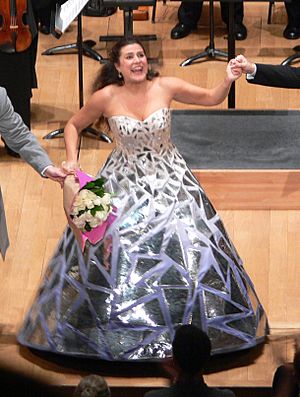
Classical singers perform live and make recordings. They might sing in churches, opera halls, or arts centers. They can specialize in art songs (with piano) or opera (with an orchestra in a staged show). Classical singers are categorized by their voice type, like contralto, mezzo-soprano, and soprano (from lowest to highest range).
Some voice types also describe the "color" of the voice, like coloratura soprano or lyric soprano. Unlike pop singers who use microphones, classical singers must project their voices naturally into the hall, which requires special vocal training.
Black Women in Classical Music
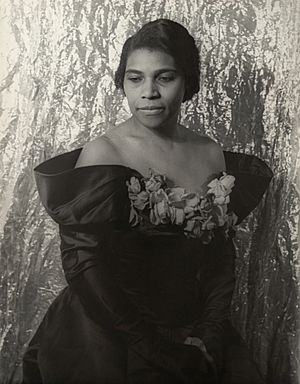
Marian Anderson (1897–1993) was an African-American contralto singer. Her voice was described as "rich" and "vibrant." She performed in concerts and recitals across the US and Europe from 1925 to 1965. Anderson was important in the fight for black artists to overcome racial prejudice in the US.
In 1939, the Daughters of the American Revolution (DAR) refused to let Anderson sing to a mixed audience in Constitution Hall. With help from First Lady Eleanor Roosevelt, Anderson performed a famous outdoor concert at the Lincoln Memorial. She sang for over 75,000 people and millions listening on the radio. Anderson continued to break barriers, becoming the first black person to perform at the Metropolitan Opera in New York City in 1955.
Famous Classical Singers
Here is a short list of notable classical singers:
- Elly Ameling
- Cecilia Bartoli
- Kathleen Battle
- Maria Callas
- Natalie Dessay
- Joyce DiDonato
- Frederica von Stade
- Renée Fleming
- Elina Garanca
- Susan Graham
- Anna Netrebko
- Jessye Norman
Music Scholars and Educators: Teaching and Researching Music
Musicologists and Music Historians
Most major musicologists (people who study music history and theory) have been men. However, some women musicologists have reached the top of the field. Carolyn Abbate (born 1956) is an American musicologist described as "one of the world's most accomplished and admired music historians."
Susan McClary (born 1946) is a musicologist who includes feminist ideas in her work. Her book Feminine Endings (1991) discusses how gender is shown in music. She suggests that the sonata form (used in symphonies) might be unfair to women. McClary argues that the idea of "purely musical" elements, separate from culture, is a way to hide social and political ideas in classical music.
Other notable women scholars include:
- Eva Badura-Skoda
- Margaret Bent
- Suzanne Cusick
- Ursula Günther
- Maud Cuney Hare
- Rosetta Reitz
- Elaine Sisman
Ethnomusicologists: Music and Culture
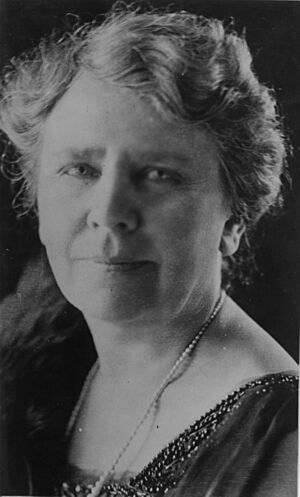
Ethnomusicologists study music from around the world. They focus on how music relates to culture, society, and other aspects of human life. This field is often called the anthropology or ethnography of music. It first focused on non-Western music but now includes Western music from cultural viewpoints.
Women have also made important contributions to Ethnomusicology, especially in how gender connects with music. Ellen Koskoff, a professor, has done extensive work on gender in Ethnomusicology. She argues that music performed by women is sometimes "devalued" or even called "non-music." Koskoff explains that the idea of men in public roles and women in private ones has created two different, but connected, music cultures.
Deborah Wong, a professor, is known for her work on Southeast Asian music and Asian American music. She has also studied Taiko, which is Japanese American drumming.
Other notable women ethnomusicologists include:
- Judith Becker
- Frances Densmore
- Ida Halpern
- Maud Karpeles
- Deborah Wong
Music Educators: Shaping Future Musicians
While some critics in the 1880s argued that women could not compose good music, it was later accepted that women would teach music. Women became so involved in music education that they led this field from the late 1800s into the 1900s. Traditional stories of music education history often don't mention women's contributions, focusing instead on male bandleaders.
However, women played many roles in music education at home, in communities, churches, and schools. They also worked as writers and volunteers. Women were accepted as kindergarten teachers because it was seen as a "private" role. They also taught music privately and in girls' schools. By the early 1900s, women started working as music supervisors in elementary schools and professors in universities.
A woman named Frances Clarke (1860–1958) founded the Music Supervisors National Conference in 1907. This was the first school specifically for training public school music teachers. While a few women led this organization in the early 1900s, there were only two female presidents between 1952 and 1992, possibly due to unfair treatment. After 1990, more women took on leadership roles.
Today, women music educators outnumber men two-to-one in teaching general music, choir, and private lessons. However, more men are hired for band education, administration, and university jobs. Dr. Sandra Wieland Howe says there is still a "glass ceiling" for women in music education leadership, as men outnumber women in administrative roles.
Notable Music Educators
- Julia Crane (1855–1923) was an American music educator who founded the Crane School of Music. This was the first school specifically for training public school music teachers. She is a very important figure in American music education history.
- Cornelia Schröder-Auerbach (1900–1997) was a musician, musicologist, pianist, and organist. She was the first woman to earn a doctorate in musicology from the University of Freiburg. She was banned from performing in 1934 due to her Jewish heritage but continued to work in music after 1945.
- Carolynn Lindeman (born 1940) was a professor at San Francisco State University. She was president of the Music Educators National Conference from 1996 to 1998. She recognized that unfair treatment existed for women in academia.
- Grace Harriet Spofford (1887–1974) was an American music educator and administrator. She was the first dean of the Curtis Institute of Music and director of the Henry Street Settlement's music school. She helped commission an opera by Aaron Copland.
- Sharon Isbin is the founding director of the guitar department at the Juilliard School and a Grammy Award-winning classical guitarist. She created the classical guitar degree programs at Juilliard, becoming their first guitar faculty member.
Conducting: Leading the Orchestra
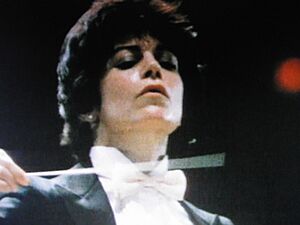
Most professional orchestra conductors are men. The Guardian newspaper called conducting "one of the last big challenges for women in the music industry." A 2013 article stated that in France, only 17 out of 574 concerts were conducted by women. Only a few female conductors have become top international conductors.
In January 2005, Australian conductor Simone Young became the first woman to conduct the Vienna Philharmonic. In 2008, Marin Alsop, a student of Leonard Bernstein, became the first woman to lead a major US orchestra as music director and principal conductor of the Baltimore Symphony. In 2014, Alsop was the first woman conductor to lead the Last Night of the Proms concert, a very important classical music event in Britain.
While there are few women in professional orchestras, recent studies show that the conducting profession lacks diversity in gender and race. There are far fewer white women than white men, and even fewer people of other racial and ethnic backgrounds. Orchestra positions, especially conductors and executives, are mostly held by white men.
However, the number of women musicians in orchestras increased in the early 1990s. From 1980 to 2014, the number of diverse musicians on stage quadrupled, mostly due to more Asian/Pacific Islander musicians. Data from 2006 to 2016 shows a slow but steady increase in racial and ethnic diversity among conductors. Even with progress, there is still work to be done.
Many women in the orchestra profession face unfair treatment based on gender or race. Women were not encouraged to play professionally because it was seen as inappropriate. They were also thought to be not strong or skilled enough for certain instruments or demanding rehearsal schedules. Jeri Lynne Johnson was the first African-American woman to win an international conducting prize in 2005. She founded the Black Pearl Chamber Orchestra, the first multi-ethnic professional orchestra in Philadelphia.
According to Edwina Wolstencroft, the music world has been happy to have female performers, but it's harder for women to have authority and power in public. She says society is more resistant to women being powerful than to them being entertaining. The low number of women conductors is not because women don't study music; in fact, almost half of those earning conducting doctorates in 2009 and 2012 were women.
The women's rights movement in America, starting in 1848, helped women fight for equal rights in many fields, including music. While this movement helped women enter the orchestra field, they still faced challenges. Women of color, especially, faced stereotypes that questioned their work. A study in 1996 showed that black performers, both male and female, were rated lower than white performers, even when playing the same music. This shows that both gender and racial unfair treatment were present.
Notable Conductors
Notable female conductors include:
- Marin Alsop (*1956)
- Jessica Bejarano (*1981)
- Frieda Belinfante (1904–1995)
- Gisele Ben-Dor (*1955)
- Nadia Boulanger (1887–1979)
- Antonia Brico (1902–1989)
- Sylvia Caduff (*1937)
- Joana Carneiro (*1976)
- Sian Edwards (*1959)
- JoAnn Faletta (*1954)
- Jane Glover (*1949)
- Mirga Gražinytė-Tyla (*1986)
- Julia Jones (*1961)
- Karen Kamensek (*1970)
- Natalia Luis-Bassa (*1966)
- Alondra de la Parra (*1980)
- Kristiina Poska (*1978)
- Lidiya Yankovskaya (*1986)
- Simone Young (*1961)
- Xian Zhang (*1973)
Other Musical Professions: Behind the Scenes
Record Producing and Sound Engineering
A 2013 article noted that there are "few women in record production and sound engineering." It states that 95% of music producers are male. Even though female producers achieve great things, they are less known than men. Only three women have ever been nominated for best producer at the Brits or the Grammys, and none have won. Women who want to enter this field often face a "boys' club" mentality.
Despite this, women have been taking on this challenge since the 1940s. Mary Shipman Howard was an engineer in New York City in the 1940s. Lillian McMurry was a record producer and founded Trumpet Records in the 1950s. Cordell Jackson (1923–2004) was one of the first women to produce, engineer, arrange, and promote music on her own rock and roll label, Moon Records. Ethel Gabriel had a 40-year career with RCA and was the first major label record producer.
Trina Shoemaker is a mixer, record producer, and sound engineer. She has worked with bands like Queens of the Stone Age and Sheryl Crow. In 1998, Shoemaker became the first woman to win the Grammy Award for Best Engineered Album.
Other notable women in these fields include:
- Leslie Ann Jones, engineer at Skywalker Sound
- Sylvia Massy, producer, engineer, and mixer
- Emily Lazar, mastering engineer
- Susan Rogers, engineer for Purple Rain
- Genya Ravan, producer
- Sylvia Robinson, early hip hop music producer
- Judith Sherman, producer and engineer of classical music
- Lari White
DJs and Turntablists: Mixing the Beats
Women in music are often seen mainly as singers in popular music. There are relatively few women DJs or turntablists in hip hop music, house music, and other genres where DJs are common. These genres are very male-dominated. This might be partly because fewer women work in audio technology jobs like sound engineering.
In 2007, Mark Katz noted that "very few women battle" in DJ competitions. In 2010, Rebekah Farrugia stated that the "male-centricity of EDM culture" leads to women being marginalized in these spaces. Katz suggests that men's love for technology ("male technophilia") affects whether women use turntables. Historian Ruth Oldenziel agrees, saying that focusing on women's supposed failure to enter technical fields is not enough. We also need to understand why boys have historically been taught to love technical things.
Lucy Green suggests that women's distance from "areas that have a strong technological tendency such as DJing, sound engineering and producing" is not because they dislike these tools. Instead, it's because these areas are seen as very masculine. Despite this, women and girls are increasingly getting involved in turntable and DJ practices. There are projects like Female DJs London that support and promote these practices. Some artists and groups, like Discwoman, are working to be more inclusive of all genders in DJ culture.
Images for kids
-
A painting from the Song dynasty (960–1279) showing female musicians playing transverse bamboo flutes and guan.
-
The Indian Carnatic classical singer M.S. Subbulakshmi (1916–2004).
-
The Japanese idol girl group AKB48 is the best-selling act in Japan by number of singles sold.
-
Bernice Johnson Reagon (born 1942) is a singer, composer, scholar, and social activist. She founded the a cappella group Sweet Honey in the Rock.
-
Carrie Brownstein from the punk-indie band Sleater-Kinney, performing at Vegoose in 2005.
-
Lilith Fair co-founder Sarah McLachlan.
See also
 In Spanish: Mujeres en la música para niños
In Spanish: Mujeres en la música para niños


